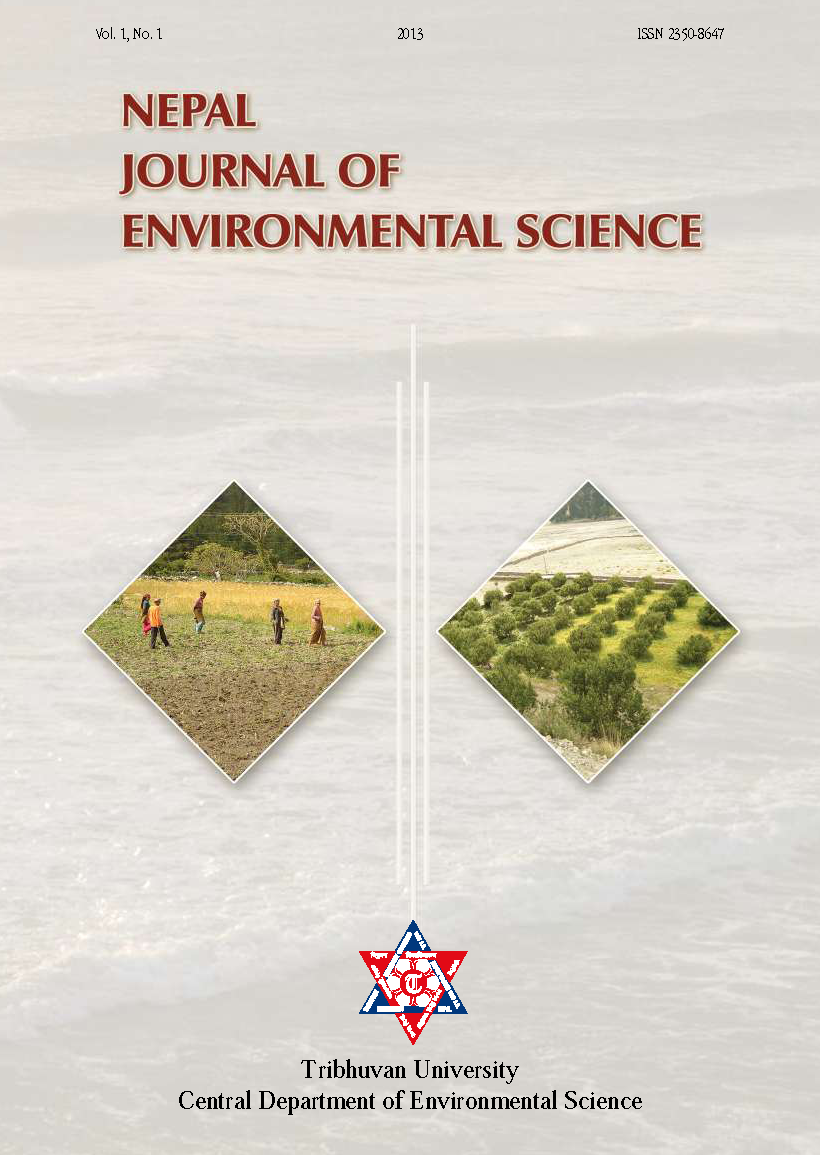Agriculture and emigration: A case study of Manapang Village, Tanahun, Nepal
DOI:
https://doi.org/10.3126/njes.v1i1.36548Keywords:
Household income, labor force, livelihood, remittancesAbstract
A study was undertaken to assess the relationship between agriculture and emigration in Manapang Village Development Committee (VDC) of Tanahun District, Nepal. A total of 120 randomly sampled households were interviewed using a semi-structured questionnaire. Results showed that the average land holding size, irrigated land holding size, livestock holding, income from agriculture, and investment of household income in agriculture were found to be higher in non-migrating households than in migrating households, whereas total household income was higher in migrating households than in non-migrating ones. The marginal value productivity of labor was lower for major crops than that of average wage rate from non-farm work. The size of abandoned land was higher in migrating than non-migrating households. The average share of remittances in household income was 62.50 % in migrating household. Higher share of the remittances was used for consumption purposes, but only 5 % was used in agriculture. Findings revealed that although emigration has a positive effect on the overall economy in the rural households, however, agricultural productivity is suffered.
Downloads
Downloads
Published
How to Cite
Issue
Section
License
This license enables reusers to distribute, remix, adapt, and build upon the material in any medium or format for noncommercial purposes only, and only so long as attribution is given to the creator.

